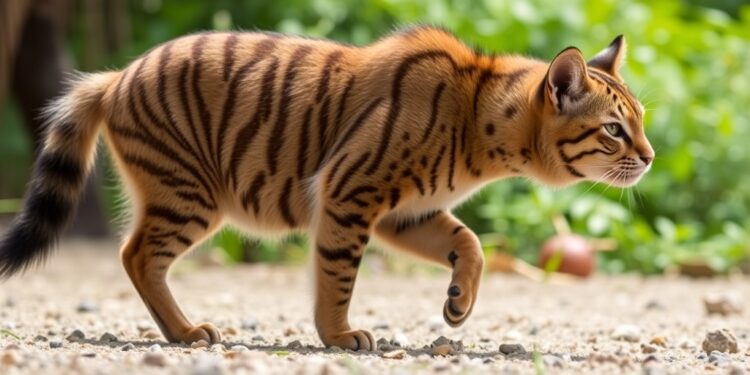
In a groundbreaking study from the Massachusetts Institute of Technology, researchers have uncovered intriguing insights into the decision-making processes of both humans and marmosets, a species of small primate. The study revolves around the concept of “exploration versus exploitation,” a fundamental dilemma faced in various tasks. This concept illustrates an inherent tendency for individuals, irrespective of species, to alternate between sticking with previously learned optimal solutions and venturing into unexplored territories that may yield even greater rewards, despite the risk of making errors.
The exploration behavior observed in both humans and marmosets suggests a shared cognitive strategy where deviation from a known optimal behavior becomes a tool for continuous learning and adaptation. As advanced cognitive agents, both species prioritize seeking out new possibilities rather than solely focusing on previously effective solutions. The study, co-authored by Professor Mriganka Sur and former research technician Tudor Dragoi, has significant implications for understanding learning behaviors across species and may hold a key to better understanding certain neurological conditions.
Mriganka Sur, an esteemed professor at MIT’s Picower Institute for Learning and Memory, emphasized that this inclination to explore, even after achieving success, mirrors our relationship with food. Much like how individuals may gravitate towards trying new cuisines despite having their favorites, both humans and marmosets display the same curiosity and willingness to explore when it comes to tasks where they have already honed a successful strategy. This instinct serves not only to reinforce confidence in previously learned behavior but also to assess whether other alternatives may lead to even greater success.
The experimental setup involved a straightforward task where both human participants and marmosets were required to make predictions about when an image would disappear from a screen. Subjects were required to measure their response time to press a button, with the key objective being to respond as quickly as possible without preemptively clicking. This task demanded both an understanding of temporal expectations and quick reflexes, showcasing the importance of accurately predicting when an event will occur based on learned experiences.
The results revealed that reaction times were influenced not just by past experiences, but also by immediate preceding trials. This phenomenon demonstrated that both humans and marmosets showed significant adaptability, as they altered their responses based on the duration of the previous image presentation. If a shorter presentation time was observed, subjects instinctively adjusted their reaction times accordingly, indicating a synchronization with recent events rather than strictly relying on their established knowledge of optimal performance metrics.
However, what stood out in the research was the observed deviation from established strategies, as both human and marmoset subjects occasionally made unpredictable responses despite earlier successes. This occurrence of ‘exploring’ alternatives emphasizes a fundamental psychological principle: even when a strategy seems flawless, there remains a biological imperative to investigate potential new pathways. The marmosets, in particular, displayed a willingness to test novel approaches—a behavior that holds significant promise for understanding cognitive variability and flexibility.
Moreover, the implications of these findings extend beyond mere animal behavior analysis. The exploration behavior was notably tied to cognitive functions relevant to autism spectrum disorders (ASD), characterized by atypical prediction capabilities. This means that the shared behaviors observed in marmosets and humans highlight a valuable cross-species model for studying autism-related cognitive challenges. Researchers have begun to explore how marmosets can serve as effective models for autism, given their advanced social structures and learning patterns that mirror those of humans.
A crucial aspect of this study is the argument surrounding the persistence of deviations in behavior, even after a definitive task learning phase has concluded. This exploration may stem from an underlying drive to refine one’s internal model of the environment, suggesting a deeper cognitive mechanism underpinning decision-making. By continuously updates their expectations and strategies, both species appear to actively cultivate cognitive models that will serve them in ever-changing landscapes of stimuli and rewards.
The convergence of human and marmoset behavior, as revealed in this study, contributes essential understanding to the field of cognitive psychology. In realizing the parallels between the two species, researchers can better interpret how learning and adaptability manifest across different contexts. The study reinforces the notion that cognitive processes are not isolated phenomena, but instead interwoven into the fabric of both human and primal behavior.
Furthermore, the collaborative work of Sur and Dragoi, along with contributions from fellow lab researchers, presents a formidable case for utilizing advanced primate studies in cognitive research. As science increasingly seeks animal models that can accurately reflect human cognitive processes, marmosets reveal themselves to be invaluable subjects due to their social complexity and comparable learning capabilities. The journey of unveiling the cognitive intricacies of marmosets may offer profound insights that span across developmental psychology and neurological research.
In conclusion, this innovative research not only broadens our comprehension of how exploration and exploitation play into learning behaviors across species, but also opens doors for future studies aimed at untangling the cognitive threads linking animal behavior to complex human functions. As we delve deeper into the rich cognitive world of both humans and marmosets, the ramifications of this research may lead to groundbreaking treatments and frameworks for addressing cognitive disorders that affect many individuals today.
Subject of Research: Humans and Marmosets’ Decision-Making Processes
Article Title: Global to Local Influences on Temporal Expectation in Marmosets and Humans
News Publication Date: February 18, 2025
Web References: Current Biology DOI
References: Not provided
Image Credits: Not provided
Keywords: Life sciences, Autism, Animal learning, Learning, Cognitive neuroscience, Cognition, Neuroscience
Tags: alternative approaches in problem-solvingcognitive adaptation in primatescognitive strategies for continuous learningdecision-making processes in humans and animalsexploration tendencies in successful individualsexploration versus exploitation in cognitive strategiesimplications for understanding neurological conditionsinsights from MIT research on decision-makinginterspecies learning behavior comparisonlearning behaviors in marmosets and humansneurological implications of exploration behaviorsrisk-taking in pursuit of rewards





